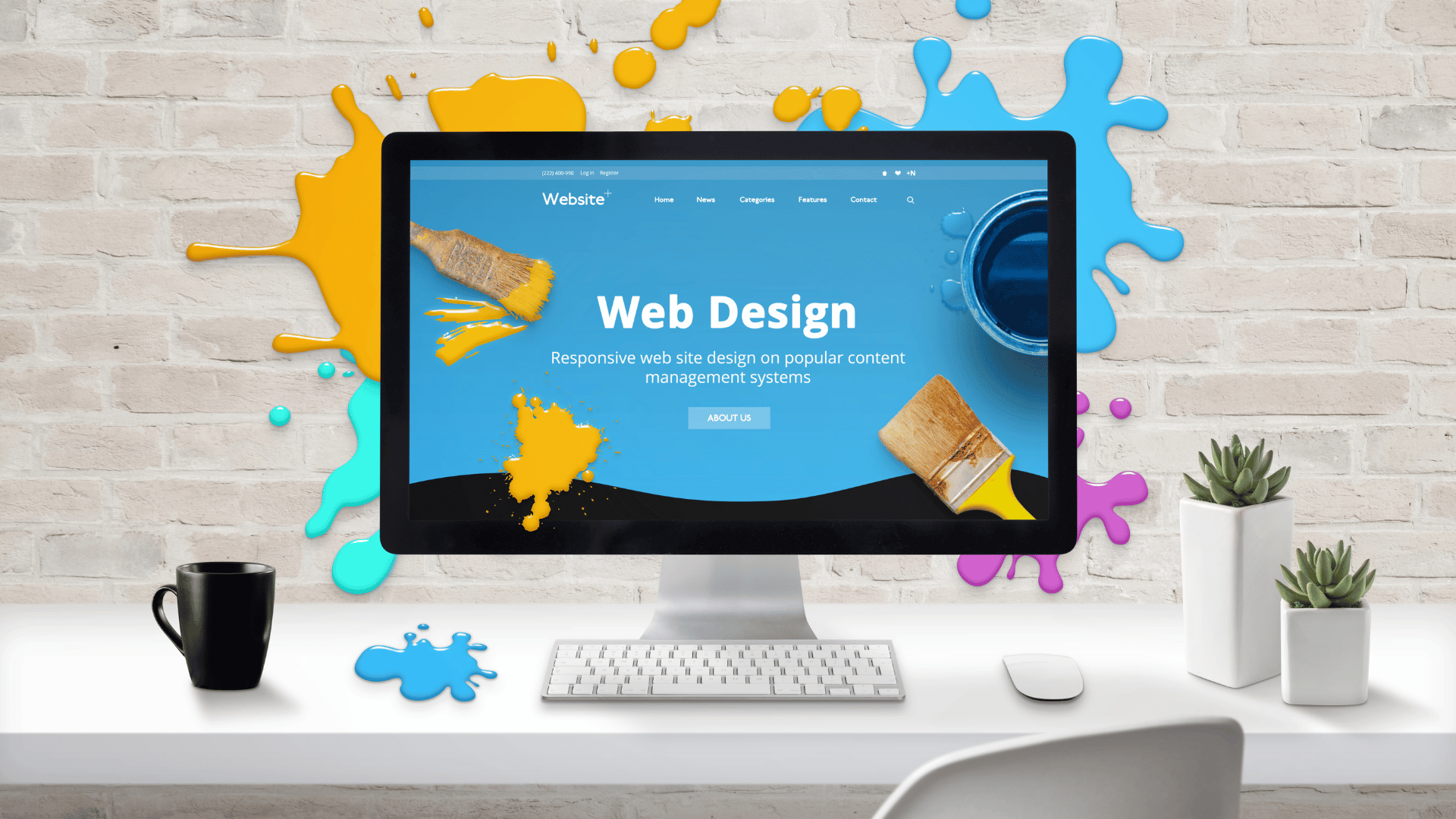8 common web design mistakes to avoid according to a Website Design Agency
The Significance of User Experience in Effective Web Design Approaches
User experience (UX) serves as a keystone in reliable web design approaches. It shapes how users interact with a website, influencing their complete satisfaction and probability of returning. A properly designed UX can boost involvement with user-friendly navigation and receptive layouts. Nevertheless, overlooking these facets might bring about irritation and boosted bounce prices. Understanding the ins and outs of UX is necessary for designers intending to create engaging digital experiences that resonate with varied audiences. What elements truly drive effective user interaction?
Understanding User Experience and Its Effect On Style
Although user experience (UX) is commonly viewed as a mere facet of web design, it essentially forms exactly how users engage with a site. UX incorporates all aspects of the user's interaction, consisting of functionality, ease of access, and general complete satisfaction. A positive UX promotes involvement, motivating individuals to discover the website and return in the future. Alternatively, an unfavorable experience can result in irritation, leading to high bounce prices and lost possibilities for conversion.
Style aspects like material, navigating, and format organization play critical functions in forming this experience. Efficient UX design anticipates user requirements and choices, making certain that details is visually attractive and conveniently obtainable. Additionally, recognizing user habits via analytics can provide useful insights, notifying design decisions that enhance functionality. Inevitably, a thorough understanding of UX enables designers to develop sites that not only attract customers however likewise advertise meaningful communications that straighten with business goals and user assumptions.
Key Concepts of Efficient User Experience
Efficient user experience depends upon a number of crucial principles that enhance site performance and engagement. User-friendly navigation style, receptive format basics, and the significance of visual pecking order are essential aspects that add to a smooth interaction between customers and internet material. Understanding these concepts permits designers to produce more accessible and easy to use digital settings.
Intuitive Navigating Style
User-friendly navigating layout serves as a critical gateway to their overall experience when individuals encounter a site. Effective navigating enables customers to effortlessly situate the information they seek, boosting their interaction with the site. Trick concepts include clear labeling, logical organization, and consistent placement of navigating elements. Labels ought to be straightforward, enabling individuals to predict the web content they will certainly discover. A well-structured pecking order assists users comprehend the relationship between different areas, guiding them via the website perfectly. Furthermore, receptive food selections and conveniently available links add to a liquid experience throughout devices. By prioritizing instinctive navigation, designers can substantially reduce user disappointment and increase engagement, inevitably fostering a positive understanding of the internet site and its content.
Responsive Layout Essentials
A well-structured navigating system naturally results in the demand for a responsive design, which is vital in today's varied electronic landscape. A receptive format assurances that websites function seamlessly throughout numerous devices, consisting of smartphones, tablet computers, and desktops. This versatility improves user experience by enabling material to be conveniently available and visually systematic, no matter of display size. Secret principles of receptive design consist of liquid grids, flexible pictures, and media queries, which promote perfect watching. In addition, focusing on touch-friendly components improves communication on mobile phones. By implementing a receptive layout, developers can suit individuals' requirements, decrease bounce prices, and increase involvement. Inevitably, a well-executed responsive design promotes a positive user experience, motivating visitors to discover the internet site even more.
Visual Power Structure Relevance
Aesthetic hierarchy plays an essential function in leading individuals with a site, guaranteeing that important details captures their attention. By tactically utilizing size, contrast, shade, and spacing, designers can develop a clear path for customers to adhere to. Larger components usually attract the eye, showing their relevance, while contrasting shades can highlight phone call to activity. In addition, constant alignment and group of related content enhance understanding, making navigating intuitive. Efficient usage of visual power structure not just improves usability yet likewise supports the general visual of the site, cultivating a favorable user experience. When individuals can conveniently identify one of the most vital info, they are most likely to involve with the content, resulting in boosted complete satisfaction and interaction with the web site.
The Role of Functionality in Web Design
Usability plays a necessary function in web design, particularly with navigating simplicity and adherence to ease of access criteria. Effective navigation improves user complete satisfaction by allowing visitors to find details quickly and with ease. At the same time, meeting availability requirements guarantees that all customers, regardless of their capabilities, can properly connect with the website.
Navigating Simpleness
Simplicity in navigation stands as a cornerstone of reliable web design, greatly affecting user experience. A structured navigation system permits users to locate details promptly and without effort, lowering stress and boosting contentment. Clear labeling and rational structure are important aspects, leading users easily via the internet site. Repetitive links or excessively complicated food selections can disorient individuals, causing raised bounce prices. In addition, mobile responsiveness needs to be thought about, get more guaranteeing navigation remains uncomplicated throughout tools. Decreasing and prioritizing crucial pages clutter additionally supports user interaction. Reliable navigating not only cultivates a positive experience but also encourages customers to check out the site more extensively, ultimately bring about higher conversion rates. In this regard, navigation simpleness acts as a crucial consider the general effectiveness of web design techniques.
Access Standards
User engagement is considerably enhanced when web sites follow accessibility requirements, guaranteeing that all customers, despite their abilities, can navigate and communicate properly. Compliance with these standards not just widens the audience but additionally improves overall user contentment. Available design includes attributes such as message choices for pictures, keyboard navigation, and adequate color comparison, which facilitate usage by individuals with impairments. On top of that, applying these requirements can favorably affect search engine optimization (SEO) by enhancing website framework and clarity. As web design develops, prioritizing ease of access becomes crucial in promoting an inclusive digital environment. By accepting these requirements, designers add to a much more equitable net, inevitably driving user loyalty and engagement.
Significance of Responsive Design for User Engagement
As consumers increasingly gain access to internet sites through a variety of devices, the value of receptive layout becomes extremely important for engaging individuals successfully. Responsive style warranties that a web site adapts perfectly to different screen dimensions, providing an ideal watching experience despite the gadget utilized. This adaptability see post enhances user involvement by helping with much easier navigation and communication with web content.
When users experience a web site that is receptive, they are most likely to stay much longer, check out even more, and return in the future. A well-designed responsive format reduces the aggravation frequently related to scrolling and zooming on smaller sized screens, therefore lowering bounce rates. Furthermore, responsive design can favorably influence internet search engine positions, as search engines prioritize mobile-friendly web sites. In today's digital landscape, where mobile use remains to rise, implementing receptive design is not just valuable, yet essential for maintaining user involvement and assuring a favorable experience throughout all tools.
Enhancing Load Times for Better User Complete Satisfaction

To improve lots times, internet developers should focus on maximizing photos, leveraging internet browser caching, and minimizing HTTP requests. In addition, using Web content Shipment Networks (CDNs) can expedite content delivery by distributing it across numerous geographic locations. Enhancing code, such as compressing CSS and JavaScript documents, even more adds to faster loading rates.
Eventually, a commitment to boosting lots times not just enhances user contentment however additionally reinforces brand commitment and improves the chance of repeat sees. A swift, seamless experience is important for keeping individuals and promoting positive interactions.
The Impact of Visual Hierarchy on User Interaction
Visual pecking order functions as an important element in directing user communication on a site. By arranging content in a means that focuses on details visually, developers can influence how individuals involve and navigate with a website. This hierarchy is established with various style techniques, consisting of dimension, spacing, comparison, and color. Larger font see here now styles or bold colors draw focus to important elements, such as calls to activity or headings, while restrained shades and smaller typefaces can show subordinate information.
Reliable visual hierarchy aids customers rapidly determine what is most important, decreasing cognitive load and enhancing functionality. It enables for instinctive navigating, making it simpler for individuals to locate what they need without stress. As customers interact with a website, a well-structured visual power structure cultivates a more enjoyable experience, inevitably bring about greater interaction and conversion rates. Designers need to prioritize these concepts to produce a effective and user-centered web environment.
Determining User Experience: Strategies and tools

Frequently Asked Concerns
Just How Can I Improve My Internet site's User Experience on a Budget?
To boost a website's user experience on a spending plan, one can optimize page lots rate, streamline navigating, execute receptive style, boost content quality, and gather user comments for constant improvements, ensuring a rewarding visitor experience.
What Prevail User Experience Mistakes to Stay Clear Of in Web Design?
Common user experience mistakes in web design consist of cluttered designs, inadequate navigating, slow filling times, lack of mobile responsiveness, overlooking ease of access, inconsistent branding, and stopping working to focus on user feedback - Web Design Agency. Each can substantially impede overall site effectiveness
Just how Frequently Should I Update My Internet Site for Better User Experience?
Web sites must be upgraded regularly, ideally every couple of months, to keep ideal user experience. Frequent updates assist address functionality issues, freshen content, and adapt to changing user demands, making certain the website stays engaging and relevant.

Can User Experience Effect Search Engine Optimization Rankings on My Internet site?
User experience can considerably influence SEO positions, as search engines prioritize sites that supply seamless navigation, quick packing times, and interesting material. A favorable user experience can lead to lower bounce prices and higher search presence.
What Role Does Accessibility Play in User Experience Layout?
Access plays a vital duty in user experience design by ensuring that all people, no matter capacities, can browse and connect with an internet site efficiently. This inclusivity enhances total complete satisfaction and engagement amongst diverse individuals.
User experience (UX) is frequently viewed as a plain aspect of web style, it essentially shapes just how individuals interact with a web site. User engagement is greatly boosted when web sites adhere to ease of access requirements, making sure that all customers, regardless of their capabilities, can navigate and communicate efficiently. Gauging user experience (UX) is necessary for comprehending just how properly a site satisfies the demands of its users. Additionally, use testing, where actual users navigate the website while viewers keep in mind problems, supplies straight comments on user experience. Typical user experience errors in web style include messy formats, poor navigating, sluggish packing times, lack of mobile responsiveness, neglecting access, irregular branding, and falling short to prioritize user comments.